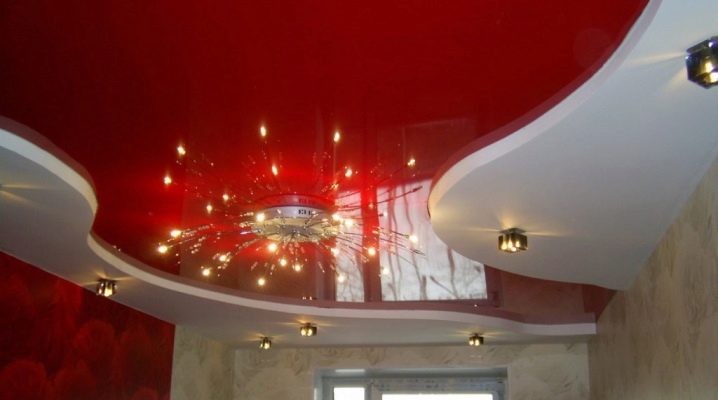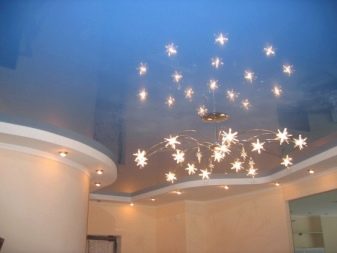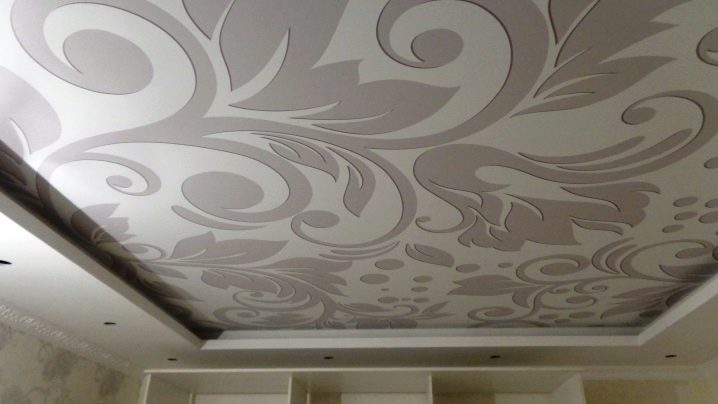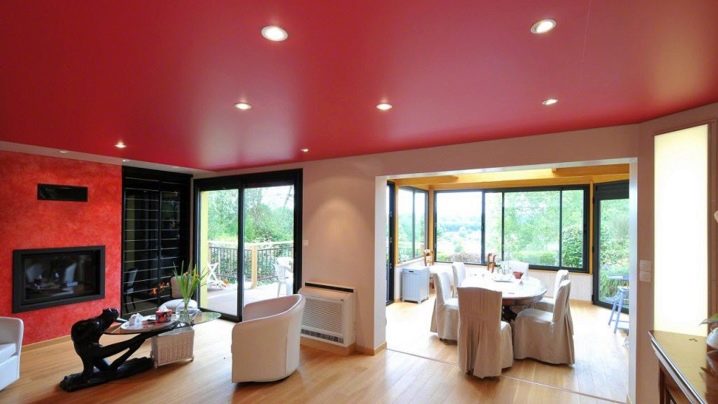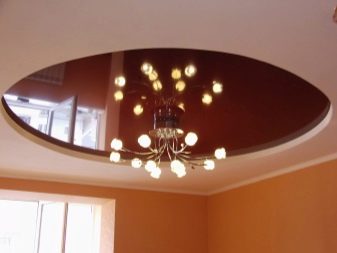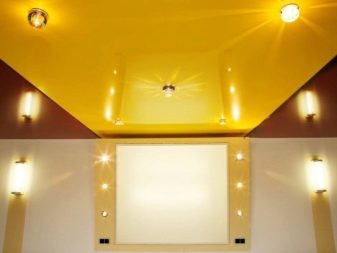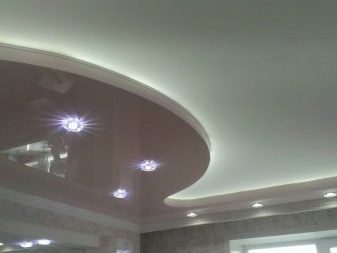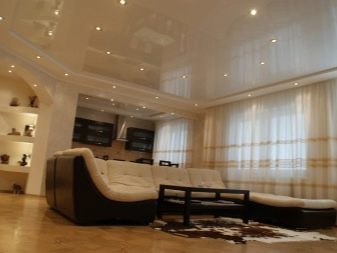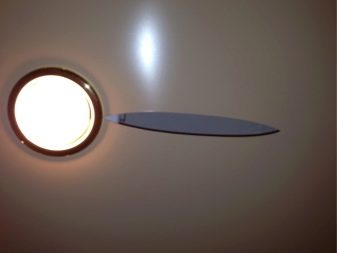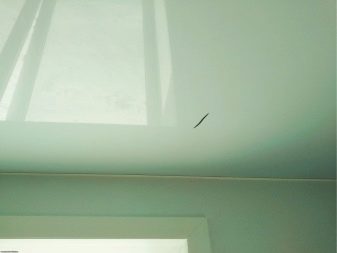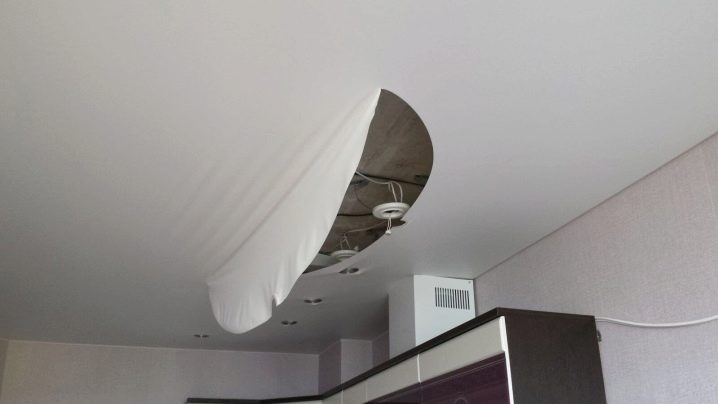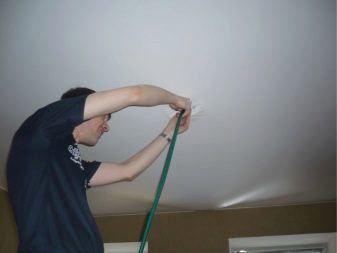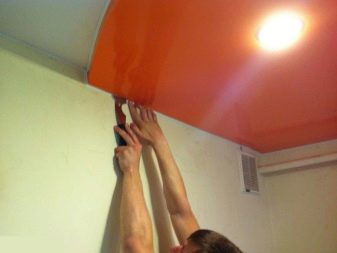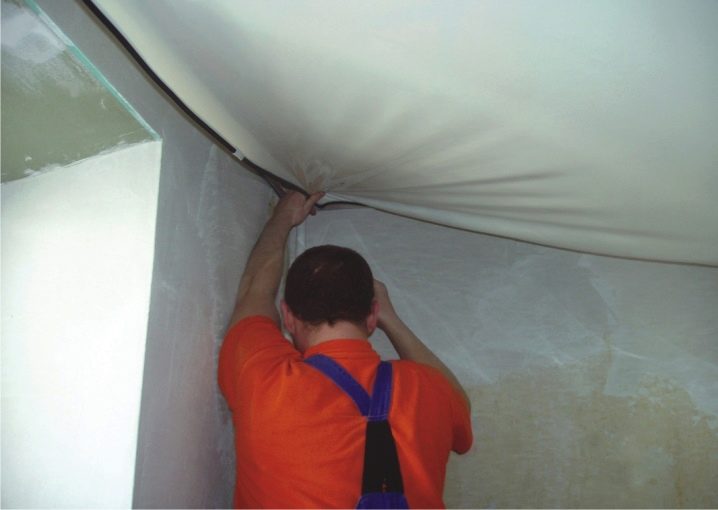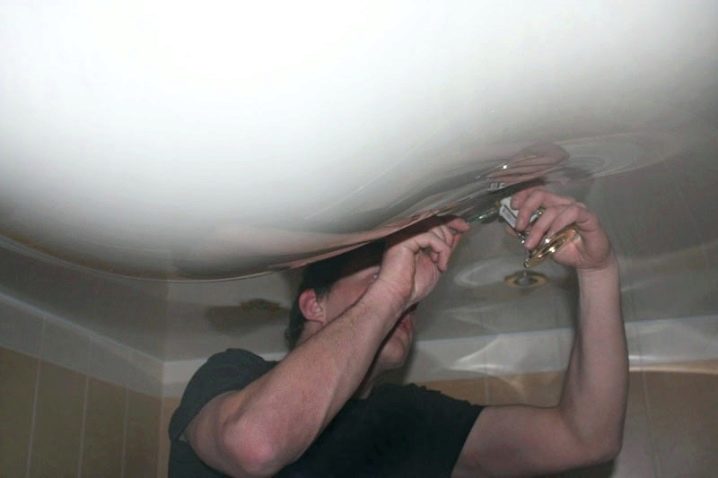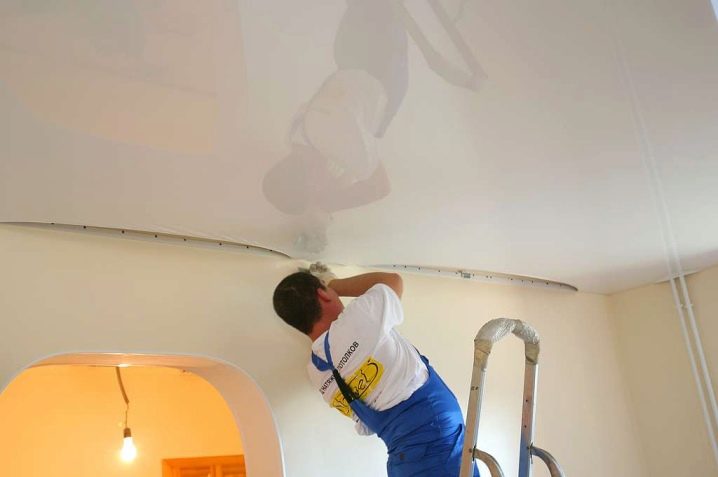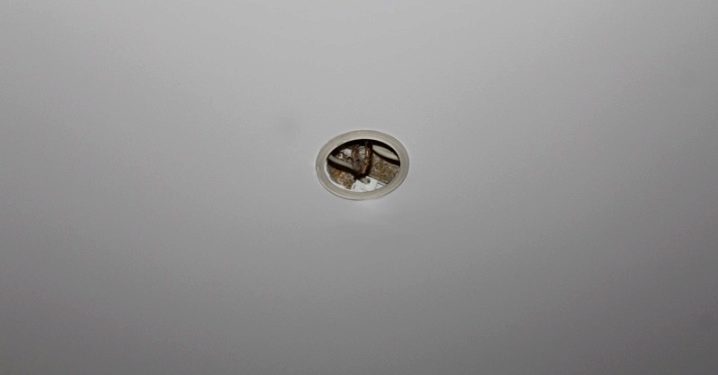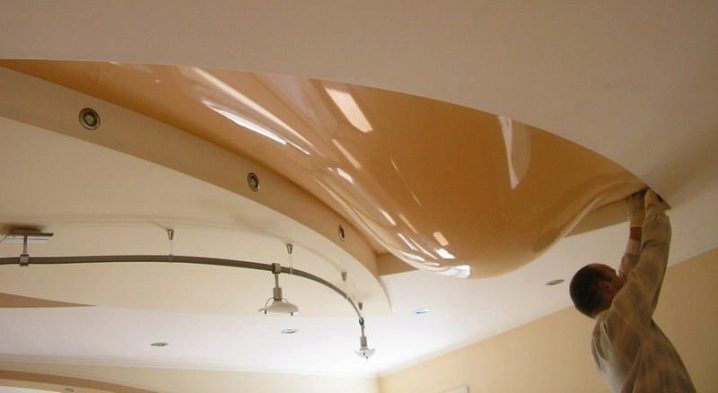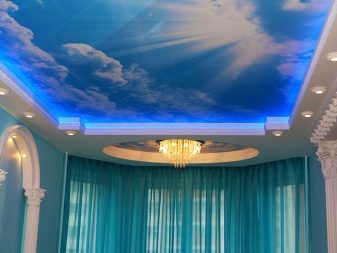Features of the process of repair of suspended ceilings
Finishing the ceiling involves aligning it. For such purposes today use several practical approaches, among which one of the most popular is the introduction of tension materials. The operation of ceiling films is often accompanied by their damage, which requires high-quality and fast recovery.
Special features
Stretch ceilings are a thin film of polymer or fabric, which is suspended in a horizontal plane on a special frame. Similar elements are made of various materials, which allows them to be divided into the following types:
- Fabric. The composition of this product may vary depending on the manufacturer. But a distinctive feature of this option is the presence of pores,capable of passing air, so fabric ceilings are used in bedrooms or children’s, that is, where optimal air exchange is needed. The material is well tolerated by temperature extremes, and it is also more difficult to accidentally cut it. Manufacturing technology allows to obtain canvases of almost any size.
Among the drawbacks can be identified the minimum rate of plasticity, as well as the rapid accumulation of dust. For fabric ceiling must be constantly monitored.
- Polymer. The main component of the product is polyvinyl chloride and its combinations. The ceiling is a thin film. The width of one layer cannot exceed 3 m, therefore for installation in large rooms several elements are simply soldered together, which leads to the formation of a visible seam.
The advantages of this product are:
- durability and versatile design;
- the possibility of dyeing polymers in almost any color;
- the upper layer does not accumulate electrostatic energy, which, in turn, prevents the accumulation of dust on the surface;
- the polymer is well stretched, which helps prevent accidental flooding of the apartment by its neighbors above;
- material strength depends on temperature;
- the product is quite easy to cut;
- damage to the material can be almost any sharp object.
Operating rules
Repair stretch ceilings - a rather complicated operation, which is not always possible to perform. But the practicality and versatility of these models today replaces suspended structures made of plasterboard. In order to avoid damage to the fabrics, when using tensioning models, you should follow some recommendations:
- It is necessary to minimize the risk of mechanical impact on the canvas. This applies to both polymer and fabric ceiling. If this is not done, then sooner or later the material can be pierced, which will lead to a complete replacement of the entire product or difficult manipulations during the repair.
- If a person does not have experience with such substances, then all operations for the installation of lamps, as well as for the removal of leaks, should be trusted only to specialists.
- Ceilings are washed only with special solutions. It is undesirable to use aggressive mixtures in apartments, as this approach is not only harmful to the material, but also affects the health of the residents of the house.
- Polymers can only be operated at a temperature not higher than 70 degrees. If you heat the web to such values, it will simply melt or lose elasticity. Therefore, all lamps installed in the room must be protected by special covers or located at a certain distance from the fabric. Also, do not allow hot water on these items.
- In a room with a stretch ceiling, a positive temperature must be maintained. It is not recommended to operate the materials with its negative values, since the substance loses its physical properties and becomes fragile and easily damaged.
Types of damage
Stretch ceilings can be easily damaged, as they are operated with significant tension. This, in turn, reduces the force required to break bonds between molecules. There are several types of damage that can be divided into groups.
- Cuts and punctures. The formation of such damage occurs at a random pressure of a sharp object on the surface of the material. In the case of plastic models, you can pierce the substance with any sharp object: a needle or a sharp corner on the furniture.
- Sagging. These defects can occur for reasons such as poor quality material or water ingress. Many models begin to sag over time, which indicates that the fabric of the ceiling construction has lost its elasticity and is no longer suitable. If the ceiling in this case is not burst, you can try to repair it, but it is not always possible.
- Gap along the seam or at the junction of the profile. The first type of damage is relatively rare. In most cases, this is due to poor quality of the supplied material, which does not withstand the load. The gap in the places of contiguity to the profile happens when improper installation of the fabric component or after its final aging.
- Fusion. The cause of this problem are lamps or ceiling lamps that heat the structure to high temperatures. To prevent the light from burning the material, it should be mounted on the basis of special protective elements. Additionally, it is necessary to minimize the risk of docking of these components during operation.
Subtleties of repair
Restoring stretch ceilings is a rather complicated operation that is not always feasible. Below are some technologies that allow you to repair the products yourself without the involvement of specialists of this profile.
Repair cuts or punctures
Such damage suggests the formation of a nonstandard shape on the surface. Over time, it can simply spread in different directions.
Before making repairs, it is important to determine the nature of the damage. If after a puncture a small a hole with a radius of 2 mm, then you can try to fill it with glue. It will simply tighten the material, forming a kind of plastic patch.
Repair also subject to small holes, the length of which is less than 10 cm. To connect the torn ends on the glossy ceiling, you should cut a patch of the same substance and glue it from the inside of the layer. It is important to carefully combine the opposite sides of the hole.
If a person is not sure that he will be able to fix the patch from the inside of the canvas, then it can be glued outside. In order not to spoil the design of the room, it is recommended to use decorative patches for such purposes.On the surface of such an element is applied a certain pattern, which will perfectly fit into the interior of the room.
An alternative to patching is to install a pendant lamp.. To do this, a metal ring is glued on top of the hole, which will prevent the polymer from spreading. Then inside it neatly cut out the remnants of the material and insert the lamp. You can use this option only if you already have similar attributes on the ceiling. If he is only one, then this style will be impractical.
When the cut is quite close to the baguette, you can try to pull the material. But such operations are carried out only by experienced specialists.. Small cuts on fabric canvases can be simply stitched with a thread. To do this, it is important to choose the color of the main coating. It is worth paying attention to the fact that only small defects can be affected by this effect.
Stretching during flooding
Such situations are quite common. It should be understood that if hot water (temperature is above 70 degrees) affected the polymer ceiling, it will not be possible to restore it.He will not be able to get back the desired form, and therefore will need its complete replacement.
If the material is stretched under the influence of cold liquid, then these ceilings can be repaired. In this case, before starting work, the apartment or riser is completely disconnected from electricity. After that, the liquid must be drained.
It is worth paying attention to the fact that you should not make a hole, since a large weight of water will simply tear the fabric in half. It is better to use the hole for the drain lampwhich needs to be previously dismantled. An alternative hole may be the edge of the web, which must be released from the latches.
When everything is ready, you should gently move the water to the hole. You should not try to do it sharply or in parts. It is better that the entire volume gradually move in the right direction.
If, however, to distribute the flow of water, then a small amount of it can remain in the corners under the material, and the water can no longer be expelled from there. After draining the liquid, allow the surface to dry. This may take several days.
Upon completion of this preparation, the fabric is gradually heated using a hair dryer.At the same time, the polymer will again acquire elasticity and form, which will make it possible to continue its exploitation.
Burned
Such damage does not occur very often. The repair algorithm is very similar to the restoration technology for cuts or punctures.
If the hole is small, then the best option is to finish the hole with a heat-resistant ring. Initially, it is glued to the ceiling, and after drying, all the insides are cut out.
Unauthorized stretching
It is quite difficult to correct such a defect on your own, as for this you need to completely remove the canvas and again pull it.
Another problem is that not all fasteners allow disassembly. Only harpoon profiles are suitable for such purposes, allowing you to pull out the material and fix it again.
Tips and tricks
Repair work related to suspended ceilings, require accuracy and care. Therefore, in order to solve such problems qualitatively and quickly, it is desirable to adhere to some recommendations:
- In case of any cuts on the canvas, you should quickly exclude the possibility of further spreading of the satin ceiling.To do this, at the edges of the hole gently glue masking tape that will hold the material until it is completely repaired.
- All reconstruction operations should be carried out at the initial stage. It is necessary to use only high-quality repair materials that can withstand the load without damaging the material.
- If the cause of a breakdown is a defect in the product or improper installation, you should immediately contact the company that installed and sold such products. In most cases, they recover such shortcomings at their own expense.
- It is important to carry out all operations with canvases very carefully so as not to destroy its structure even further.
All operations for the reconstruction of paintings need to trust a team of experienced professionals who know how to quickly and accurately solve a specific problem. Such an approach will reduce the risk of further tissue damage and ensure long-term use of the product for a long time.
The option to repair the stretch ceiling is presented in the next video.
